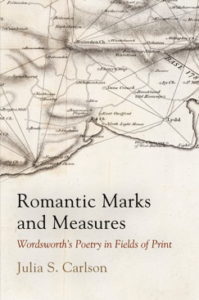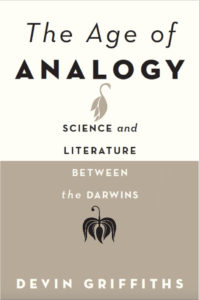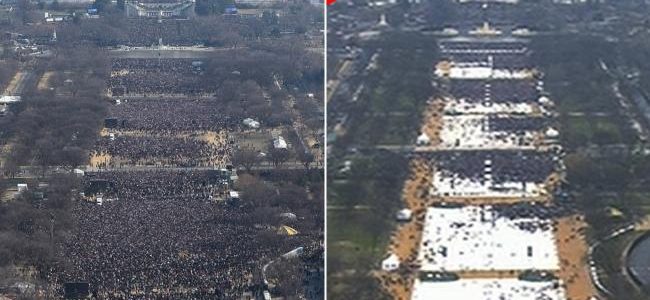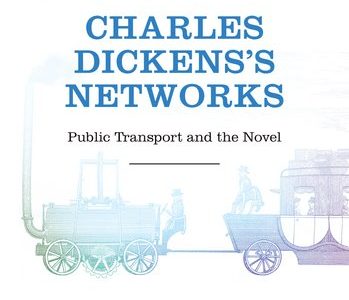Right now I’m working on a long article about the cross-disciplinary history of the modern comparative method. It’s really, really interesting to read disciplinary histories from across the humanities & social sciences (mainly linguistics, anthropology, sociology, political science, history, and literature) and see how different fields and their objects inflect basic questions about the nature of change, the implications of pattern, and the relation between historical and synchronic/contextual perspectives. The article tests a key argument from my book, The Age of Analogy (a claim for the interplay of “analogy” and “comparison” in the formation of the modern comparative method), by looking at disciplines beyond literary and scientific history, and considering scholarship in French and German, as well as English.
If I wanted to be cheekily topical in that article (and I don’t), I would point to the comparisons that people are now drawing between the crowd sizes at the 2009 and 2017 presidential inaugurations. Such comparison is (1) meant to gauge something about the distinctions between two different political formations and two different moments in historical time, and (2) is necessarily structured by analogy. To read the comparison is to recognize the relation between a common structuring spatial scheme (the Mall), and its service as a framework for a series of implicit analogical relations, which can be summarized in the form “A is to B as C is to D,” or A : B :: C : D. The most obvious implied analogy here: Obama’s 2009 crowd size : enthusiasm for Obama :: Trump’s 2017 crowd size : enthusiasm for Trump. (I note that the counter arguments offered by Sean Spicer and others center on why the two situations aren’t analogous: there were white ground coverings in 2017, new delays in the security, etc.).
This isn’t an example used in the article, which will (hopefully) be out sometime toward the end of this year, but I thought I’d share here my [lightly edited] response for our MLA panel in Philadelphia a few weeks ago on “Analogy after the Enlightenment.” It was organized by Adam Sneed and Taylor Schey, and featured impressive papers by Taylor, Elizabeth Duquette, and Ken Hirschkop.
The question I want to begin with: why should we study analogy? Listening to these papers, the answers seem to be (generalizing broadly — and what is the job of respondent but to generalize?):
(1) We should study analogy because (as Taylor accurately notes) it has been positioned as a key marker for the transition between Enlightenment/Augustan poetics and Romanticism (a formulation that has helped make sure it was almost entirely overlooked in the C19). To return to analogy, in his account, then means to refigure the deep Romantic investment in relationality and uncertainty in a longer framework — one that wouldn’t require us to forget the eighteenth century (or even the rest of the 19th in the signature Romantic leap to modernism), but recognize a more continuous narrative.
(2) In Elizabeth’s account, the turn to analogy helps us rethink the philosophical coordinates of the mid-nineteenth century novel, or at least, Melville and the way that philosophical discourse presents a problem for the novel’s investment in incident and character, forcing it to tell rather than to show. So, to return to Taylor’s argument, if the Romantics put paid to analogy, and Anglophone print culture was truly transAtlantic, it should be deeply surprising that analogy remained a concern for mid-nineteenth century novels (popping up also in Charlotte Brontë’s Shirley and George Eliot’s Felix Holt).
(3) Finally, as Ken explains (with extraordinary precision), analogy was not only important to linguistics, but perhaps the most important formal procedure for the formation of Saussure’s structural distinction between langue and parole. If this is true (and I think it is), this means that analogy is central to the structural turn — an unacknowledged founding move that helped to birth many of the critical procedures that we gesture to when we say (or used to say) postmodern or poststructural.
To these I would add that there’s a strong argument to be made for analogy’s central role in new historicism (as Alan Liu has argued) by way of Clifford Geertz and American-school social anthropology, with its focus on comparing thin and thick description, text and context. And it was also an important procedure for Marxist formalist criticism, with its profound but compulsive concern for the relation between economic or productive “base” and cultural “super structure.” Even a work like Frederic Jameson’s Political Unconscious — a book that continues to be a central pivot for our reconsiderations and anxieties about what it is that we do when we do literary scholarship — can be seen as an extended meditation on the Marxist problem of “reflection,” which is most simply just another disciplinary specification of a dynamic that, in a longer history, was called “analogy.”
So: Why do we study analogy? For lots of good reasons. Analogy is part of the story of how we got here. And in the current political moment, the story of how we got here seems really, really important.
A further question might be: How might we flesh out what analogy means, particularly in the nineteenth century, when its cultural, methodological, and philosophical meanings were (and are still) in flux?
As I have recently argued, in my book, “The Age of Analogy” (just out from Johns Hopkins Press), both analogy and comparison — as terms and as methods — were fundamentally reformulated in the transition from the eighteenth to the nineteenth century — in the transition that put us “after the Enlightenment.”
Analogy, which had played an important role in Western philosophy, Christian metaphysics and philology, had long represented a strategy of relational analysis that studied similarity. First stop. Comparison, on the other hand, was largely incubated in the classical rhetorical tradition as a way to underline contrasts and distinctions. Second stop. The modern comparative method emerged when these two traditions were brought together and focused on the problem of studying both how things are similar and different — what we now call, in primary education, to “compare and contrast.”
When I first stumbled upon this claim, while writing yet another abstract of the book to be, it seemed so simple, it simply couldn’t be true. With the benefit of several more years I can say, not only is it true, but it applies not only to English, but to academic writing in French (where the operative terms are “comparaison” and “analogie”) and German (and the terms “vergleich” and “analogie”). Not only that, but this reformulation of analogy and comparison played an important role in the formation of the modern humanist disciplines, organizing in important ways not only how people like Matthew Arnold thought about culture, as an object and as a hermeneutic, but more generally, in the formation of anthropology, biology, sociology, religious studies, philology/linguistics, mythology, political science, and of course, literary criticism in English. At the most general level, analogy structured the linguistic and cultural turns that later dominated 20th century humanism.
Seen through this lens, analogy starts to look less like our peculiar hobbyhorse — that rhetorical figure that for some reason has seemed less sexy than metaphor, allegory, or symbol — and more like an important engine for the disciplinary formation of the modern humanities.
And yet it’s quite rare, not just in English literary criticism, but in the various disciplinary histories that I’ve been reading recently, truly rare for anyone to talk about the relation between comparison and analogy. This is true even in a field like linguistics that, despite having retained the term “analogy” for a specific language phenomenon, as Ken explained, virtually never considers the importance of analogy to the formation of the comparative method, a moment that essentially birthed modern linguistics from the older traditions of philology, translation, and rhetoric. Analogy in linguistics, as in Romanticism and most fields of comparative analysis, remains a kind of abject term that denominates outmoded or problematic practices even as we happily go along comparing and contrasting. What else, for instance, might we call the “relational comparison” of Édouard Glissant & Shu-mei Shih? Or the “equivalences that do not unify” described by Franz Fanon and Natalie Melas? Virtually all modern disciplines, comparative literature not excepted, have amassed a range of new terms that have formalized procedures that were once more loosely termed “analogies.” (A bit closer to my disciplinary home, I don’t know if anyone else here was at the panel yesterday on “‘Victorian’ in a comparative field,” but in spite of some really impressive accounts of the past, present, and future of comparative literary studies, the term “analogy” never came up.) This is surprising and truly interesting if you believe (as I do) that there is no comparatism, historically or methodologically speaking, without “analogy.”
Conspicuous absence arguments are always a kind of a critical Mcguffin, but I do think we should think more about why this is so. Why is it that discussions of comparatism don’t invoke analogy as an important critical object, and vice versa? I hope we can start to think more but also talk more about the relation between analogy and comparison. For one thing, it would help us in thinking concretely about the expressive forms and generic histories of comparative study. This isn’t simply a question of intellectual history; to overlook analogy’s place in the modern comparative method is to overlook the basic formal structure that allows comparatism to operate.
To put it differently, it might be more appropriate to think of analogy as a network of affiliated practices, each with important histories and contexts, rather than as a stable object or single tradition. To adapt Franco Moretti’s argument in his most influential essay, “Conjectures on World Literature,” (which itself draws demonstrably on disciplinary arguments over the nature of analogy within comparative literature and anthropology as well as evolutionary biology); as I say, to adopt Moretti’s argument, we might study analogy as an interplay of waves and trees. On the one hand, we might study analogies in the waves of interdisciplinary contact through which relational analysis is adapted to new phenomena — often founding or substantially remaking entire fields of study. But we might also study analogy through trees of influence, through narratives of differentiation that trace the network of those operations over time and study the patterns of these engagements. This would also help us place the importance of specific applications and discoveries of analogy within the wider humanities.
A final problem is that, if analogy is in fact central to humanist scholarship, its historical study inevitably depends on its object as method. This isn’t a new problem, but certainly demands that we think carefully about how the dynamic we identify as “analogy” plays into our study of its various applications.
So, we should keep talking about analogy after the Enlightenment. Because it might be the case that analogy helps describe a big chunk of what happened in our disciplines after the Enlightenment. “After the Enlightenment,” after all, is shorthand for modernity, so let’s keep thinking about how analogy helps explain (or perhaps pose) our modern condition. Thanks.





